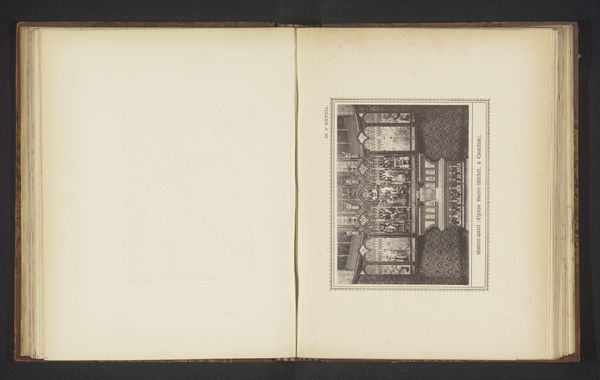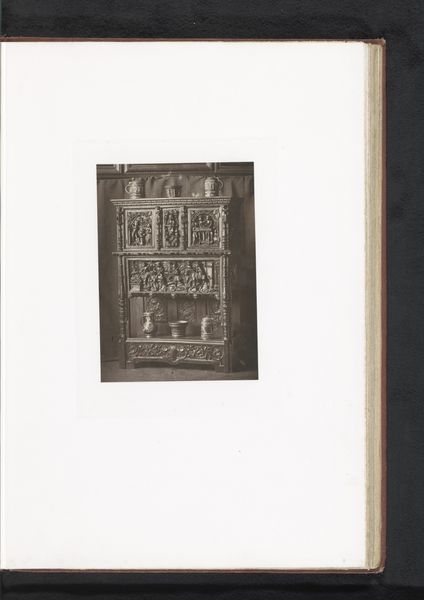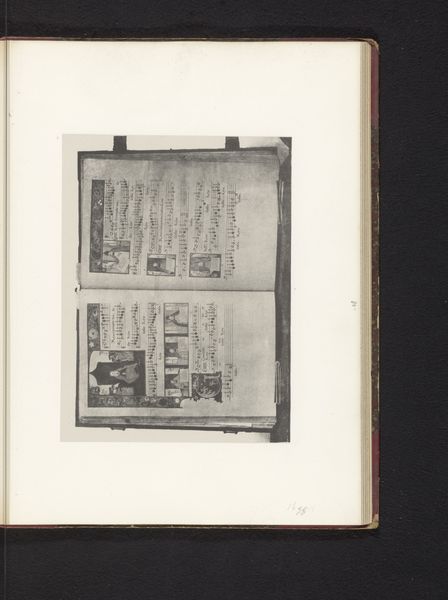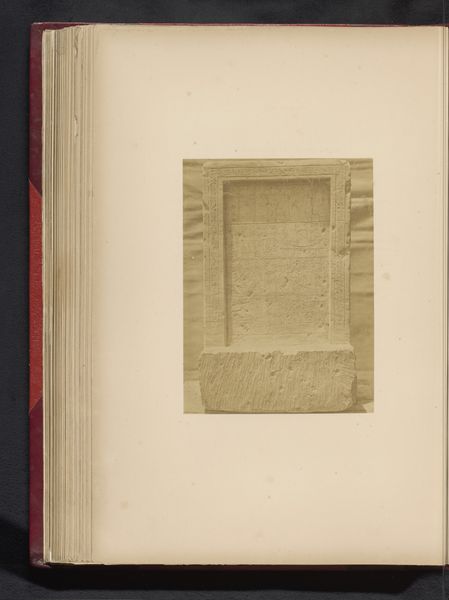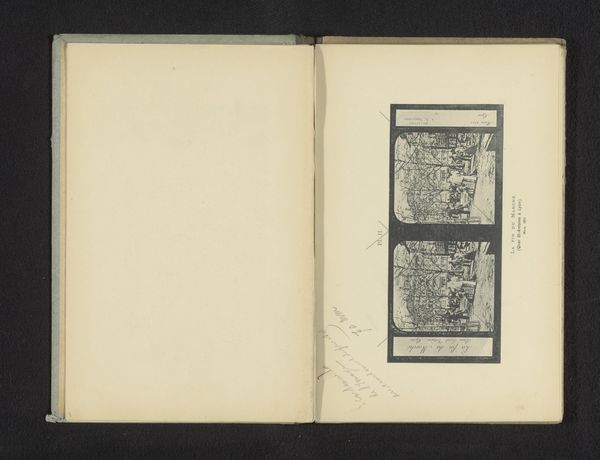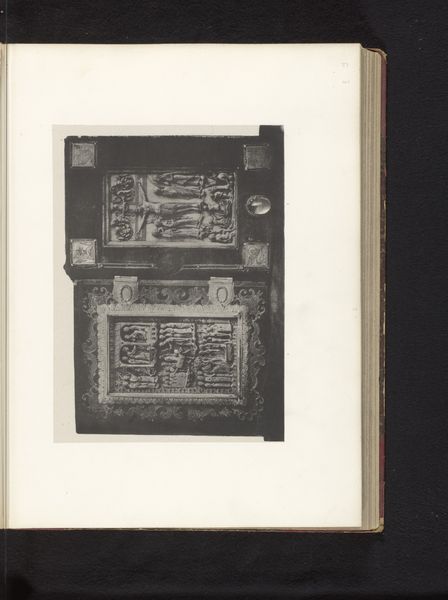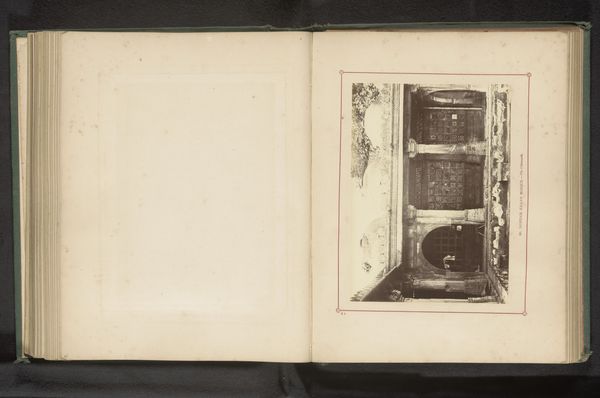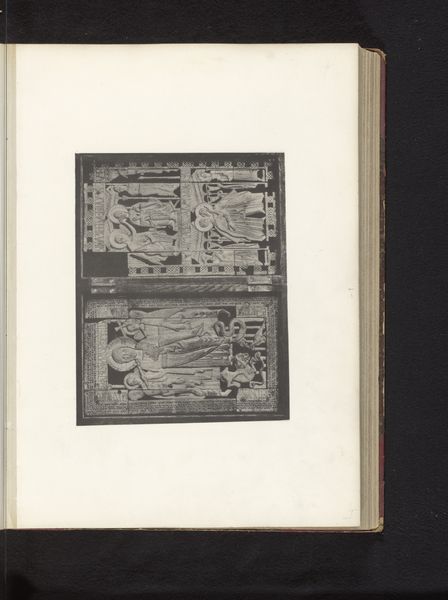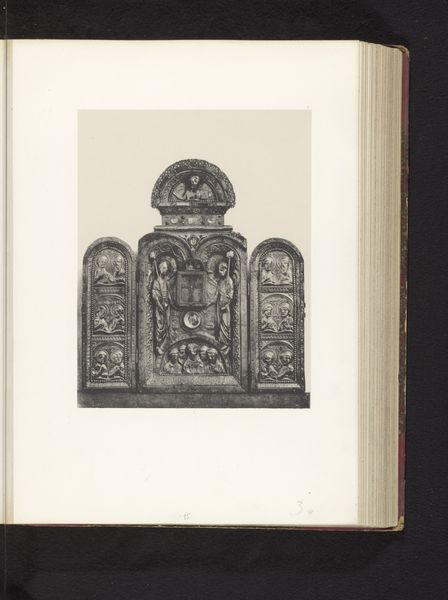
Draagbare relikwieënkast van goud uit de collectie van senator Vergauwen uit Gent, opgesteld op een tentoonstelling over religieuze objecten uit de middeleeuwen en renaissance in 1864 in Mechelen before 1866
0:00
0:00
print, engraving
#
medieval
# print
#
history-painting
#
engraving
Dimensions: height 216 mm, width 266 mm
Copyright: Rijks Museum: Open Domain
Curator: This print depicts a portable reliquary made of gold. It was part of Senator Vergauwen's collection in Ghent, displayed at an exhibition in Mechelen back in 1864. The image is attributed to Joseph Maes, dating it to before 1866. Editor: It strikes me as oddly delicate, considering its function. The image itself is so flat, like looking at a rubbing, I almost want to reach out and touch it, feel the texture of the gold. Curator: Reliquaries, of course, held sacred relics - fragments of saints or objects associated with holy figures. Their symbolic power was immense. Did you notice the prominent crosses, emblems of faith and sacrifice, positioned centrally on both compartments? They certainly convey a sense of history. Editor: The repetitive geometric patterns circling the central crosses really make me think about production and skill. I wonder about the goldsmith's techniques – were they using chasing, engraving, or perhaps a combination? How accessible were materials like gold, and what was the social status of the artisan creating such objects? Curator: The very fact that it's *portable* speaks volumes, doesn’t it? These weren't meant for stationary display; they accompanied their owners, bringing spiritual reassurance during travel, war, or pilgrimage. Think of it as a mobile icon, deeply intertwined with personal faith. Editor: Right. And a sign of immense wealth! Only the elite could afford a gilded spiritual safety net. I'm curious about the senator—Senator Vergauwen. Was he particularly devout, or was this precious item primarily an indication of political power, another sign of accumulation and the reach of capitalist endeavour into even sacred territories? Curator: That's the crux of it, isn’t it? The object itself exists within many systems of power, faith being only one of them. Still, consider its intended role—to inspire devotion, hope. Even now, that sense of veneration still persists, despite the shift in context. Editor: I'm left wondering how objects such as these were experienced, traded, melted down and reused. The allure remains despite the flat print, yet it prompts more questions than it resolves concerning social position and craft. Curator: Ultimately, it's a poignant intersection of faith and craftsmanship, rendered for us in monochrome— a reminder of the enduring power of symbols and their ability to transcend time. Editor: Precisely, revealing the potent role that wealth and artistry play, intertwining the sacred and the secular through the making and possession of culturally valuable objects.
Comments
No comments
Be the first to comment and join the conversation on the ultimate creative platform.
